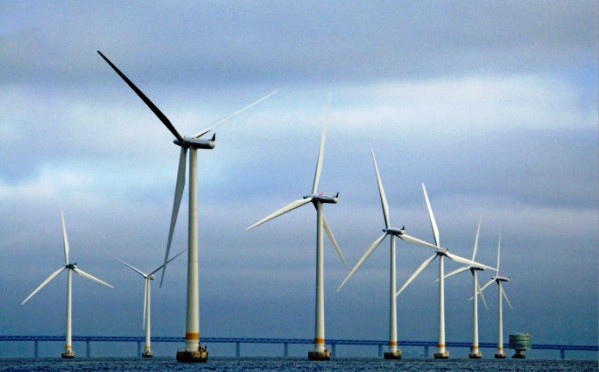Oceana released a new report today that finds offshore wind power would produce twice the number of jobs and twice the amount of energy as offshore drilling in the Atlantic Ocean.
The report, titled Offshore Energy by the Numbers, An Economic Analysis of Offshore Drilling and Wind Energy in the Atlantic, challenges recent claims by the oil and gas industry that opening the East Coast to offshore drilling will lead the United States to energy independence, generate millions of dollars in revenue for states and create thousands of jobs in the process. Oceana’s analysis instead finds that the benefits projected by the industry appear to be exaggerated due to the inclusion of oil and gas resources that are not economically recoverable, thereby inflating the potential benefits. Industry estimates also rely upon an assumption of a state revenue-sharing system that does not exist.
“Our report compares economically recoverable oil and gas development to conservative estimates of offshore wind development to allow an ‘apples-to-apples’ comparison of the energy and jobs that would be created by each source,” said Andrew Menaquale, report author and energy analyst at Oceana. “The American public deserves to know the facts when it comes to expanding this dirty and dangerous practice to the East Coast, and what alternatives there are for clean energy generation.”
Oceana’s report also finds that offshore oil and gas development along the Atlantic could put at risk some of the nearly 1.4 million jobs and over $95 billion in gross domestic product that rely on healthy ocean ecosystems, mainly through fishing, tourism and recreation. In fact, Oceana says the threats of offshore drilling would begin far before a rig is ever put in the water. In July, the Obama administration announced its decision to consider proposals for the use of seismic airguns that make dynamite-like blasts to search for oil and gas deposits deep below the ocean floor in an area twice the size of California, stretching from Delaware to Florida.
“Based on the government’s own estimates, seismic blasting in the Atlantic could harm fish populations while injuring as many as 138,000 marine mammals like whales and dolphins, disturbing the vital activities of as many as 13.5 million more,” said Menaquale. “Instead of working to fully understand the implications of rushing to develop offshore oil and gas, our elected officials are being blinded by imaginary short-term profits and missing the real opportunity that wind provides.”
Some of the report’s other key findings include:
*In just 13 years, offshore wind could generate more energy than could be provided by all of the economically recoverable offshore oil and gas resources.
*In the next 20 years, offshore wind could create about 91,000 more jobs than offshore drilling (about double the job creation potential of offshore oil and gas).
*A modest and gradual development of offshore wind on the East Coast over the next 20 years could generate enough energy to power over 115 million households.
*Based on government estimates, if all of the economically recoverable offshore oil and gas in the Atlantic Outer Continental Shelf were extracted and used, oil demand would only be met for less than five months and gas demand would only be met for less than 10 months, at current consumption rates.
*For comparison purposes, the energy created by 20 years of offshore wind in the Atlantic would produce nearly twice as much energy, (five billion barrels of oil equivalents) than what would be created by all of the economically recoverable oil and gas.
*The Atlantic Ocean contains less than 4 percent of the nation’s total oil reserves and less than 3 percent of its gas reserves.
*In all seven states where offshore drilling is being considered, offshore wind would produce more jobs.
*North Carolina has the highest wind resource and job creation potential of any state in the targeted offshore drilling zone.
“Unlike offshore drilling, offshore wind provides power directly to coastal communities where we need energy the most, without the risk of oil spills or carbon pollution,” said Menaquale. “It’s time for the U.S. to use the lessons learned from more than 20 years of offshore wind development internationally and apply them to generating clean, renewable energy off our coasts.”
Oceana is also holding informational events about this report today in Raleigh, NC, Beaufort, SC and Satellite Beach, FL.
To access Oceana’s full report and other materials, please visit www.oceana.org/atlanticenergy.
Oceana is the largest international advocacy group working solely to protect the world’s oceans. Oceana wins policy victories for the oceans using science-based campaigns. Since 2001, we have protected over 1.2 million square miles of ocean and innumerable sea turtles, sharks, dolphins and other sea creatures. More than 600,000 supporters have already joined Oceana. Global in scope, Oceana has offices in North, South and Central America, Asia, and Europe.



